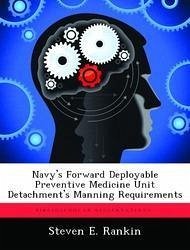This thesis examines the potential manning shortfalls for the Navy's proposed Forward Deployable Preventive Medicine Unit's (FDPMU) twelve-member Detachment. The twelve-member detachment is derived from the existing twelve-member preventive medicine Mobile Medical Augmentation Readiness Team (MMART)--a Navy medical deployment augmentation program for operational platforms and contingencies. Generally the MMART team was fully employed during deployments but now has the additional Chemical, Biological, Nuclear/Radiological and enhanced Environmental (CBRE) mission taskings. This unit can be task organized for fewer personnel but has a twelve-member core detachment necessary to provide coverage to all the technical specialties supported by the full team. The current manning utilized by U.S. DOD units with similar and overlapping mission requirements in the areas of preventive medicine, CBRE, and laboratory capabilities was examined. The number of personnel identified as essential to support those similarities were compared to those proposed for the FDPMU Detachment. The study concludes that the FDPMU Detachment manning requirements are feasible, but as the minimum number of personnel required for basic mission accomplishment in a low threat environment.
Bitte wählen Sie Ihr Anliegen aus.
Rechnungen
Retourenschein anfordern
Bestellstatus
Storno









